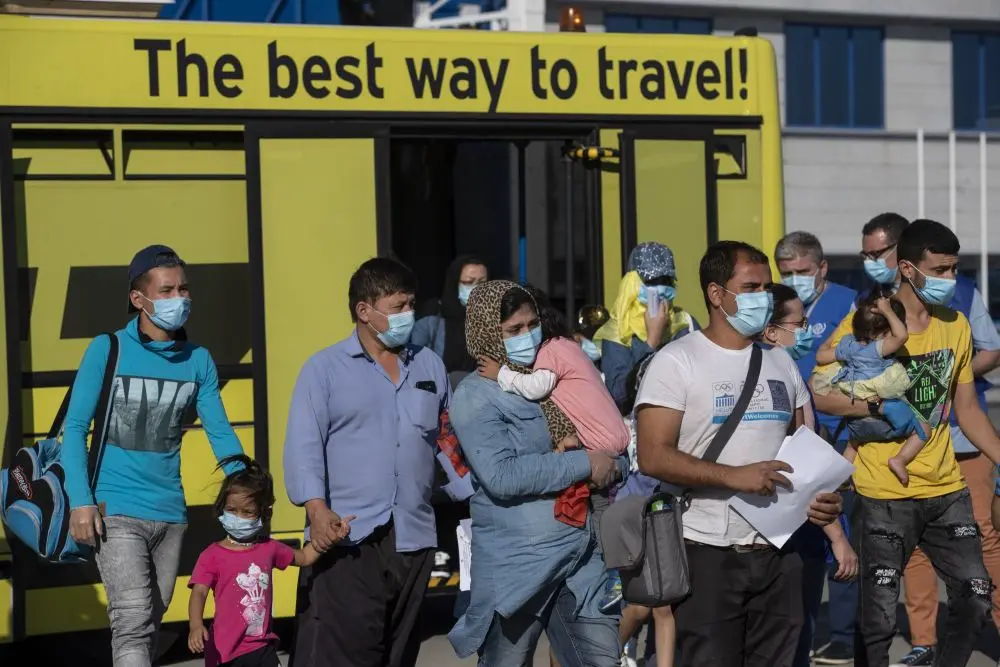The migration crisis in Europe has been evolving since 2015 and at first, it didn’t seem to be a crisis at all. A large number of people headed for Europe longing for a better life and, after getting what they wanted, gradually started bringing relatives there. They received social benefits that were so high that they had no reason to seek employment. This corrupted their thinking: they could afford much more in Europe without doing anything at all compared to Africa or the Middle East where they had to work seven days a week.
As the saying runs, the road to hell is paved with good intentions. Perhaps this is how the situation that has evolved over time in Europe can be characterized. They wanted to attract cheap labor but failed to take into account that not all people would be willing to work legally: not everyone has a clean past and not everyone wants to work legally and integrate into European society. This resulted in no-go enclaves being created in European cities, where even the police are afraid to enter. There is no order – as an ordinary European understands it – there. The happy Europe of the 90s slipped away from us as if it had never existed. But how all these people get to Europe and how many? What countries are they willing to get to? And, perhaps most importantly, what is Europe doing to stop this endless flow of refugees from Africa and the Middle East?
There are three routes that people take to reach the European continent:
- The first one is Greece. Perhaps, it has been and remains the most popular since the very onset of the crisis. A person would come to Turkey, where they would take any chance to cross the strait. On the one hand, it’s safe, but on the other hand, it is risky because even having crossed the border of Turkey and the European Union, they would strive to get to the most prosperous countries of the European continent located in the North such as Germany, France, maybe Sweden. To do this, they need to cross a bunch of countries on the Balkan Peninsula exposed to a risk of being caught and deported back to their homeland. However, this is associated with a number of obstacles too. Deportation must be authorized by an appropriate treaty entered into with the country from which the migrant originates. There are simply no such treaties with a number of states. As a result, such individuals are simply detained in temporary accommodation facilities throughout Europe.
- The route through Italy ranks number two among the most popular ones. However, it is the most dangerous one. To take it, people would swim across the Mediterranean Sea. They would normally start their journey from Tunisia or Libya. Mostly from Tunisia because it’s safer. Since the fall of Muammar Gaddafi’s regime, Libya has been in chaos, especially its southern regions. According to official statistics, every 10th migrant normally dies on the way through the Mediterranean Sea. Those who are lucky to reach the shores of Italy disembark and begin their journey north if undetected by the police. If the police manage to detect a boat carrying migrants and approaching the shore, which is normally immediately reported by local residents, the foreigners would be forthwith registered and sent to overcrowded temporary accommodation facilities. But, as far as is known, there is nothing more permanent than temporary. There migrants would await until their further fate is decided.
- Spain is the third, least popular way, but still worthy of being put on our list. Normally, people would get there through Morocco or use a more difficult route: through the Canary Islands that belong to Spain. In a real sense, the latter looks like this: People from West African countries would get to an elite vacation resort and scare away all rich tourists with their appearance, reduce hotel prices but secure seats for themselves on relatively comfortable and safe boats of the Spanish Coast Guard to get to the mainland because the islands are confined in terms of space, migrants cannot be accommodated next to rich tourists and people residing on the islands need to earn money somehow.

It is migrants and their influx into EU countries that give rise to increasingly growing calls to reintroduce border management in European countries. This idea was partially implemented by Germany. Interior Minister Nancy Faeser voiced a similar initiative in early October this year. After a series of her failed initiatives, it seemed that the latest one would be just another one of the kind. But the outcome turned out to be not so bad. Quite the contrary, it’s very good. Everyone admitted that the minister’s initiative had worked out and enabled catching migrants. Apparently, since such an approach has proven its effectiveness, it is expected to be extended to other countries. Most likely, it’s only a matter of time. This, however, happens inside the European Union but what about outside?
As for the EU’s external borders, the heads of EU countries are trying to protect themselves by entering into agreements with African countries to curb migration. For instance, in July this year, European Commission President Ursula von der Leyen executed a Migration Control Treaty with Tunisia whereby the latter undertook to reduce Tunisia’s throughput capacity and Europe undertook to provide EUR 1 bn in financial aid. President Kais Saied of Tunisia must have rejoiced because that billion was money created out of thin air that could partially “end up in his pocket”, especially considering the fact that he has a reputation as a dictator. Almost six months have passed since then and there is no practical effect from the treaty. According to news from Lampedusa, the number of migrants on the island has exceeded the number of the indigenous population. It’s sad but it feels like we see something that Europe is going to face in the near future under the leadership of a real politician, a gynecologist by trade, whom Angela Merkel once decided to get rid of by sending away from Berlin – to Brussels.














Comments